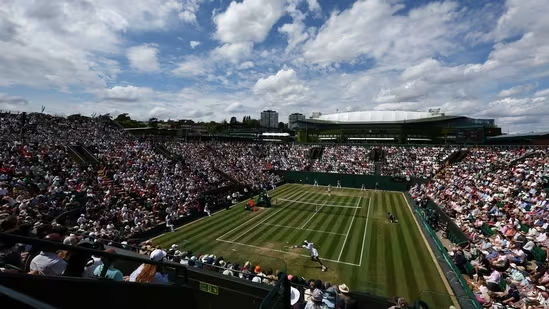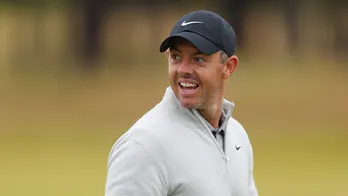Ruminating over dead grass and India’s glorious tennis history
“It used to be called lawn tennis. And the sport stayed true to its name,” Jaidip Mukerjea says matter-of-factly. “Now, it’s just tennis.” Except for these couple of weeks, when the iconic lawns of the All England Club come alive and rekindle the charm of grass. Except for a tiny six-week window on the elite level tours, when a sprinkling of tournaments on the surface quench the thirst to practice a perishing art, for its artists and admirers alike.

Other than that, it’s just tennis. Especially so in India, where grass-court tennis, seeped in history and soaked in opulence, has all but disappeared. The Davis Cup tie between India and Denmark last year on the grass courts of Delhi Gymkhana Club was a breath of fresh air in the barren landscape of playing, and watching, tennis on grass in the country.
Which, in the decades gone by, resembled a buzzing hive. Grass had been greener in Indian tennis from a century ago, right from when the All India Lawn Tennis Association was formed (it is now just All India Tennis Association). The country would host two separate national championships, one exclusively on grass that was first held in 1946 at the famed South Club in Kolkata (then Calcutta). Made richer by its foreign flavour — some top stars of world tennis spent their winters playing on the grass courts of India.
Its champions were much celebrated: from Sumant Misra and Ramanathan Krishnan, to two-time Wimbledon champion Roy Emerson of Australia and Romania’s former world No.1 Ilie Nastase, to Premjit Lal, Vijay Amritraj, Ramesh Krishnan and Mukerjea.
All of them took their craft to various cities of the country that hosted, apart from the prestigious Asian Championships, a well-carved domestic circuit on grass.
“Those days, there were only grass or clay courts, no synthetic courts,” Mukerjea, who made the last 16 at Wimbledon four times, says. “We grew up playing a lot on grass. Most of our tournaments were on grass. Most of our great wins came on grass. The grass circuit began in November and travelled to places like Amritsar, Delhi, Lucknow, Kolkata, Allahabad, Jaipur. We then switched to clay or hard courts.”
Kolkata’s South Club would be a special serving in that elaborate grass spread. With 12 courts of the natural green “considered next to Wimbledon in those days”, as Bengal Tennis Association CEO Sujoy Ghosh mentions, catching some serve-and-volley treat on that hallowed turf was bon appetit for tennis fans in the country.
“People used to hang their towels courtside as a mark of booking,” Ghosh recalls. “As a kid, I still remember the points of Roy Emerson beating Ramanathan twice in the final in South Club. We would watch these players play on grass with awe. Even stepping on to the court was a big deal for us.”
Also, a big deal was Indian players’ results on the surface, individually and collectively. Aside from the Krishnans and Amritraj making deep runs at Wimbledon, some of Indian tennis’ red-letter triumphs in Davis Cup came on grass: from the legendary 1966 inter-zonal final turnaround tale against Brazil at South Club to the iconic tie against Pakistan at Mumbai's Cricket Club of India four decades later.
For that much-anticipated Pakistan duel in his home city, Leander Paes, Ghosh narrates, sought the expertise of a gardener of South Club, in not just converting the cricket stadium into a makeshift tennis surface but also rolling the grass as per the hosts’ taste.
“So myself, our association secretary and the maali stayed at CCI for about three weeks to prepare the court,” Ghosh recalls. “Leander told us to make it (the surface) slow, so that Aisam ul-Haq Qureshi’s serve from one side can be negated a bit. We rolled the surface accordingly, with a slight slope from left to right.”
India clinched that tie 3-2 with Paes and Mahesh Bhupathi weaving their magic on grass and inspiring a generation with triumphs like those. “My first memories of watching tennis on grass live was the Davis Cup matches in Delhi...watching Leander, Mahesh throughout the years, winning multiple Davis Cup matches for the country,” Yuki Bhambri, India’s former junior world No.1, says.
Bhambri, 31, won an ATP doubles title on grass at Mallorca in the week leading up to Wimbledon, where, partnering Saketh Myneni, he lost in the first round. There was no Indian in the Wimbledon singles draw this time, only one in the qualifying. For the current Indian players who have little experience of training or competing on grass, that is hardly a surprise.
“Most academies and clubs, especially in India, have a lot more hard courts now,” Bhambri says. “Not just me, for every player, it’s hard to adapt to grass. The courts at Wimbledon have changed too and are a lot slower, which adds to the challenge.”
From its double-digit high, South Club is now left with only six grass courts. From 2008 to the present, India have hosted only five Davis Cup ties on grass, while all ATP and ITF tournaments in the country are held on hard or clay courts. The advent and popularity of all-weather hard courts, coupled by the high maintenance process and cost of grass courts for season-specific use, signalled a rapid decline.
It mirrors a more global phenomenon of a changing game and equipment. “Grass-court tennis was basically serve-and-volley, which was good to watch. Now if you see, even at Wimbledon, they’re all hitting from the back of court. I’m not saying that’s bad, but that’s how much the game has changed,” Mukerjea says.
“I miss grass-court tennis,” he adds. “But as long as Wimbledon is there, it will be alive.”
In India, save the odd Davis Cup tie, it is dead. “We have to forget about grass courts in India," Ghosh says. “Just look forward to Wimbledon once a year for the eyes.”
And for the memories.
Disclaimer: The copyright of this article belongs to the original author. Reposting this article is solely for the purpose of information dissemination and does not constitute any investment advice. If there is any infringement, please contact us immediately. We will make corrections or deletions as necessary. Thank you.







